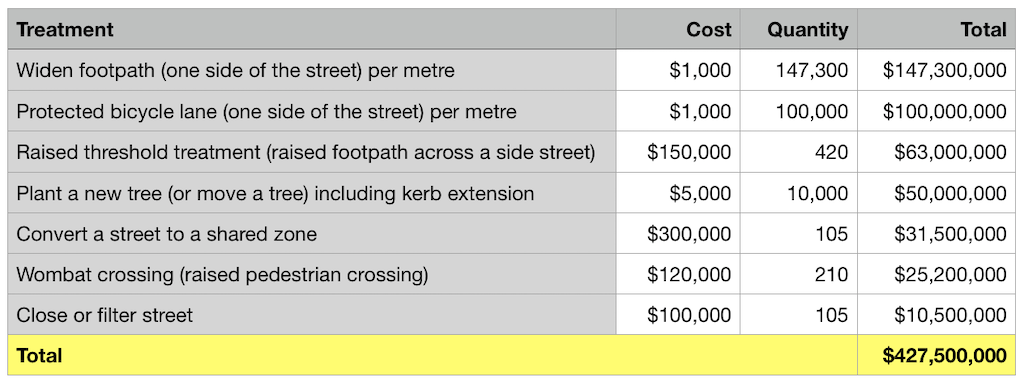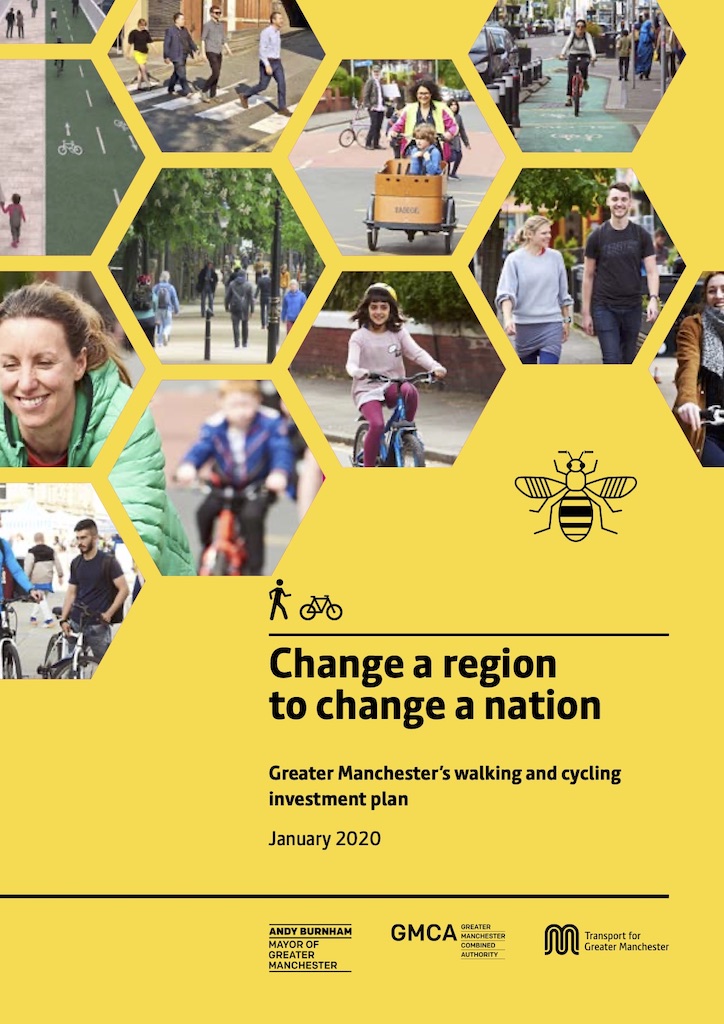How much money should we invest in our streets?
The City of Yarra has obligations to:
- maintain a functioning city by avoiding gridlock,
- help decarbonise transport by 2030,
- prevent death and serious injury by protecting the public, and
- comply with Strategic Objective 5 of the Council Plan.
However, at present, we are maintaining a ‘business as usual’ approach to budgeting, which will result in:
- severe congestion and gridlock on many streets before 2030,
- inadequate reduction in our carbon emission by 2030,
- negligible change to hazards, risks, deaths and serious injuries on our streets,
- little progress in enabling people to lead a fulfilling life without the need to own a car.
The solution to these issues is to increase our expenditure on active transport and local area place making from ~ $1 million per year to $10 million per year. This page describes how the value of $10 million per year is derived.
Required treatments
Actions to invest in active transport and local area place making include:
- widen footpaths (including moving kerb, gutter and drainage)
- build a network of protected bicycle lanes
- build raised threshold treatments (where footpaths continue at grade across minor side streets)
- plant trees (or move trees if widening the footpath)
- convert lanes or streets to shared zones (where lots of people walk)
- build wombat crossings (or raised zebra crossings)
- close or filter local streets (to keep commuter through traffic on the arterials)
Expenditure per treatment
Implementing each of these treatments requires a certain expenditure:
- widen footpath: $1,000 dollars per metre (one side of the street)
- build a protected bicycle lane: $1,000 per metre (one side of the street)
- build a raised threshold treatment: $150,000
- plant a tree (move kerb, excavate & make good) : $5,000
- convert a street to a shared zone: $300,000
- build a wombat crossing: $120,000
- close or filter a street: $100,000
Number of treatments
We can also estimate the quantity of each treatment required in Yarra:
- widening and re-paving a footpath: 30% of our 491 km of footpath, considering that many footpaths are too narrow (or too sloping) to be usable by a wheelchair or mobility scooter
- build a protected bicycle lane: 50 km across Yarra, matching the 50 km targeted by the City of Melbourne (or 100 km for both sides of the street)
- build a raised threshold treatment: 420 across Yarra, or 20 in each of 21 LAPM areas
- plant or move a tree: 10,000 trees across Yarra, reflecting Yarra’s Urban Forest Strategy
- convert a street to a shared zone: 105 across Yarra, or 5 in each of 21 LAPM areas
- build a wombat crossing: 210 across Yarra, or 10 in each of 21 LAPM areas
- close or filter a street: 105 across Yarra, or 5 in each of 21 LAPM areas
Total expenditure
Which leads to a total cost of $427 million:

Annual expenditure
If we build the above over 10 years, we need to spend $42 million per year.
Therefore, a budget of $10 million per year is conservative, even though it is 10x higher that what we are spending now.
Validation from Council
Validation for an expenditure of $10 million per year can be collated by tasking Council Officers to cost the implementation of a Transport Strategy over 10 years, including a footpath network, a bicycle network, protected intersections, level access tram stops, and 30 km/h Low Traffic Neighbourhoods.
Validation from Manchester
Greater Manchester in the UK is proposing to invest 1.5 billion pounds (or 3 billion Australian dollars) over 10 years in high quality infrastructure for walking and cycling. This is AU$107 per person per year for each of Greater Manchester’s 2.8 million residents.
For Yarra to match Manchester’s expenditure per person, Council would need to invest $10.7 million per year, which validates our proposal for $10 million per year.

Feedback welcome
Streets Alive Yarra welcomes your feedback. If you can contribute more accurate costings for a treatment type, or better estimates on how many treatments would be required across Yarra, please contact us. Please also note the positive business case for investment in active transport.
How you can help
You can help by appearing on the Streets Alive Yarra website as a champion for your local street, neighbourhood, or school.
